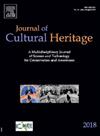Analysis of medieval organic remains: Incense in SE Spain
IF 3.5
2区 综合性期刊
0 ARCHAEOLOGY
引用次数: 0
Abstract
The medieval organic materials recovered from Visigothic strata (8th century CE) at El Tolmo de Minateda (Hellín, Albacete, Spain) and from 11th century CE strata at La Graja (Higueruela, Albacete, Spain) were initially identified as incense remains used in religious ceremonies. Utilizing SEM, EDS, FT-IR, and GC–MS techniques, we have refined our understanding of these samples. The El Tolmo materials contain aromatic compounds from various botanical sources, especially conifer resins, indicating a local origin. In contrast, the La Graja samples, dating from the Muslim period, show a predominance of benzaldehyde and benzyl alcohol, differing significantly from the El Tolmo findings. The El Tolmo remains, which still emit an incense and smoke aroma, represent a local formulation of ritual incense using nearby botanical species. Conversely, the La Graja remains appear to have undergone intense pyrolysis. The presence of iron on the surface of these samples suggests they may have been in contact with iron, either in containers made of this material or in wooden-handled iron tools as plant-based adhesives.
中世纪有机遗骸分析:西班牙东南部的沉香
从 El Tolmo de Minateda(西班牙阿尔瓦塞特,Hellín)的西哥特地层(公元 8 世纪)和 La Graja(西班牙阿尔瓦塞特,Higueruela)的公元 11 世纪地层中发现的中世纪有机材料最初被认定为宗教仪式中使用的熏香残骸。利用扫描电子显微镜(SEM)、电离辐射光谱(EDS)、傅立叶变换红外光谱(FT-IR)和气相色谱-质谱(GC-MS)技术,我们完善了对这些样品的了解。El Tolmo 样品含有来自各种植物的芳香化合物,尤其是针叶树树脂,这表明其来源于当地。与此相反,穆斯林时期的拉格拉哈样本则主要含有苯甲醛和苯甲醇,与埃尔托尔莫的发现大相径庭。El Tolmo 遗址仍然散发着香气和烟雾,代表了当地利用附近植物物种配制的祭祀香。相反,La Graja 遗址似乎经历了剧烈的高温分解。这些样本表面的铁元素表明,它们可能曾与铁接触过,要么是在铁制容器中,要么是在木柄铁制工具中作为植物粘合剂。
本文章由计算机程序翻译,如有差异,请以英文原文为准。
求助全文
约1分钟内获得全文
求助全文
来源期刊

Journal of Cultural Heritage
综合性期刊-材料科学:综合
CiteScore
6.80
自引率
9.70%
发文量
166
审稿时长
52 days
期刊介绍:
The Journal of Cultural Heritage publishes original papers which comprise previously unpublished data and present innovative methods concerning all aspects of science and technology of cultural heritage as well as interpretation and theoretical issues related to preservation.
 求助内容:
求助内容: 应助结果提醒方式:
应助结果提醒方式:


